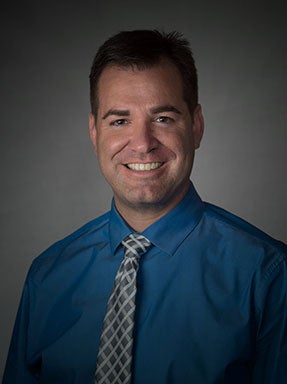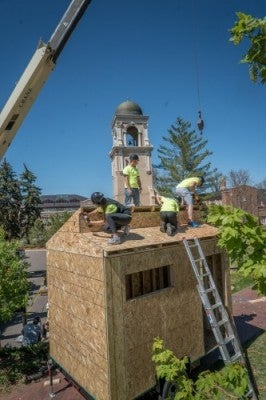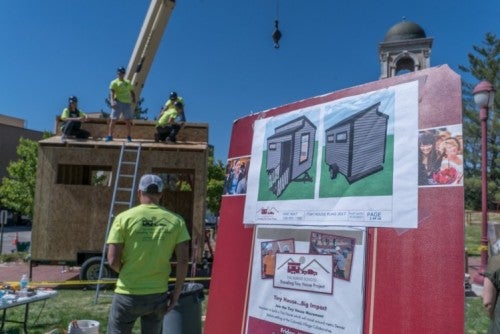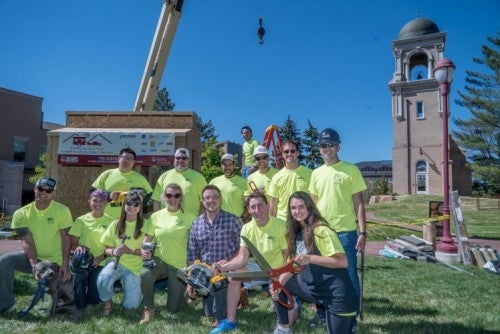Helping the Homeless
DU students construct a tiny house for the Colorado Village Collaborative
“This is 100 percent experiential learning. It’s the real world, and you can’t make it more experiential than what we are doing.”
Taking lessons learned in the classroom and applying them to an actual situation. That’s the experience Eric Holt, an assistant professor in DU’s Franklin L. Burns School of Real Estate and Construction Management, is providing for his students.
Graduation Green outside the Margery Reed Building was transformed last Friday into a construction zone as students started building a tiny house. This is the fourth year Burns students have built projects on campus. In previous years, they have constructed full-size playhouses to donate to families in need.
“Construction management students are very hands-on learners,” Holt says. “To talk about it in a PowerPoint is one thing; coming out to really do it and learn why these systems go together, why the walls are built that way, it is so powerful for these students.”
In one day, students were able to construct the shell of the tiny house. Over the next six weeks, the rest of the home will be finished so that it can be displayed at the national tiny house Jamboree and the 2017 solar decathlon.
“A lot of people have not been on a construction site very much, so this is a good application of what they’ve learned,” says Chris Landsinger, who received his undergraduate degree in finance and is now pursuing a master’s in real estate. “Really applying what you know is something you can’t teach in the classroom. You can teach someone what a 2x4 is, but you can’t tell them how to cut it or how to really work with it. Really seeing how something goes together and having a hand in it, you learn so much that you can bring back to the classroom.”
All the material and most of the equipment used on this project were donated by local businesses. When the house is finished, Holt believes it will be worth between $10,000 and $15,000. Plans call for it to be donated to the Colorado Village Collaborative, an organization that is building tiny home villages in Denver for the homeless.
“Building this house is huge,” says Nathan Hunt, who works for Interfaith Alliance, just one of several organizations that are part of the Colorado Village Collaborative. “Just the cost of lumber, construction, people who are skilled to put together a home, and to then just give that to us is incredible. There is someone living outside right now that someday will be in a dignified, secure, safe place of their own.”
Hunt says the goal is to open three tiny house villages by next winter, and a total of 20 within the next five years. Each village would have about eleven homes, a communal kitchen, bathroom and shower. This model of living for the homeless is already being used in Seattle and Austin.
“It’s not great to sleep outside, and a shelter is not a home,” Hunt says. “Having a private space of your own, that is a permanent location, that you can go back to every night, that builds stability. There is nothing like housing to solve homelessness.”
Holt says the decision to build a prototype house for Colorado Village Collaborative was a no-brainer. Not only does this project serve as a great lesson for students, it also represents the objectives outlined in DU IMPACT 2025, the University’s strategic plan. The vision for DU is to engage with organizations and diverse communities across Denver and throughout the Rocky Mountain West to serve the public good.
“Our students get to be involved with a service project that has a great cause behind it,” Holt says. “The homeless will get to have a home with an address, a place to charge their phone, a real schedule, they can go get a job and eventually move out of the village and get out of the homeless track.”











